Olympus E-330 Digital SLR Review
Olympus E-330 Digital SLR
Olympus has produced another unconventional, but very worthy digital SLR.
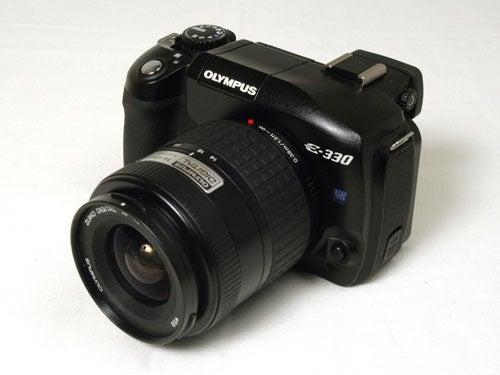
Verdict
Key Specifications
- Review Price: £799.00
Having reviewed the entry-level Olympus E-500 digital SLR a couple of months ago, this week I’m taking a look at its more expensive stable mate, the mid-range E-330. Available for £799 body only, or £879 with the 14-45mm standard zoom lens included on my review sample, and featuring an 8MP CCD and a range of professionally-oriented features, the E-330 is going head-to-head with successful mid-range and semi-pro cameras from the other major SLR manufacturers, including the Nikon D200, the Fujifilm S3 Pro, and of course the Canon EOS 30D, which I looked at last week. It is a replacement for the E-300, which was launched nearly two years ago.

The E-330 is an unusual camera for several reasons. It is only the fourth camera to use the promising but still not widely accepted Four Thirds lens and sensor format. Although Kodak, Fujifilm, Sanyo, Panasonic, Leica and Sigma all officially support the system, so far only Olympus has actually produced any cameras or lenses that are compatible with it. This is puzzling, because it’s really a very good system for small mid-level digital SLR cameras.
The Four Thirds CCD is smaller than the APS format sensor used in many current digital SLRs, but quite a bit bigger than the 2/3 size used in many high-end zoom cameras, and as the E-1, E-300 and E-500 have all shown it is capable of producing excellent results. The specially developed lenses are designed to work with this smaller sensor, and are generally smaller and lighter than equivalent lenses designed for an APS or Full-frame sensor system.
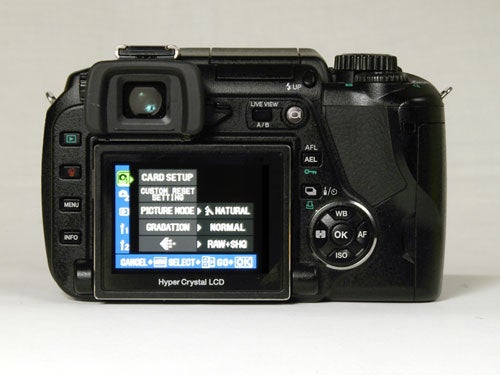
The E-330 is also unusual because of its shape. Like the E-300 it has a reflex mirror that is angled sideways rather than upwards, so the viewfinder prism is actually mounted to the side of the lens mount, on the right as you are looking at the front of the camera. This does away with the large prism box that is a common feature on the tops of all conventional SLR cameras, both film and digital. The viewfinder is offset from the centreline of the camera, and looks out of the lens via a complex optical path of prisms and mirrors.
While this does save a bit of space and the shape makes the camera appear more compact than other DSLRs, the effect is somewhat illusory because it is by no means a small camera. While it is a little smaller and lighter than the Canon 30D and Nikon D200, it is significantly larger and heavier than the Pentax *ist DL2 and Canon EOS 350D.
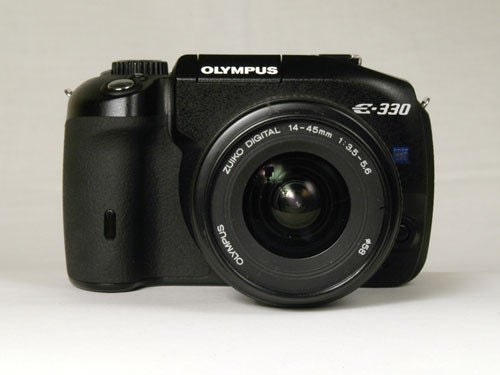
The E-330 is unusual – in fact unique – because it is the first digital SLR to offer a continuous live view on the LCD monitor.
The system is ingenious but a little cumbersome. It has two live view modes; in the normal “A” mode, a second separate CCD in the viewfinder optical path provides the monitor view with approximately 92 per cent frame coverage, which is comparable to the coverage of most optical viewfinders. In the “B” mode, the reflex mirror is locked open and the main image capture CCD provides the live view with 100 per cent frame coverage. Unfortunately this also disables the autofocus system, so it’s manual focus only. I found B mode almost unusable, mainly because of the lousy electro-mechanical focusing control on the standard zoom lens. However the A mode works a treat, and is immensely useful.
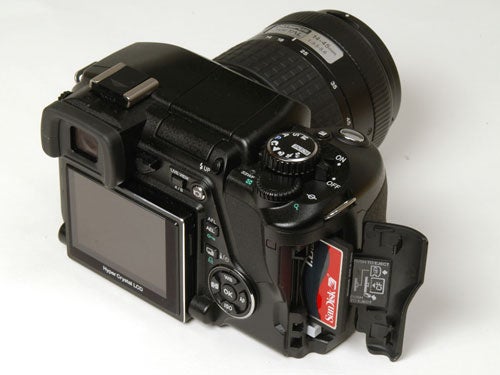
The E-330’s LCD monitor is a particularly nice one, with a diagonal size of 2.5in and a resolution of 215,250 pixels, which is nice and sharp. It is also mounted on a double hinge, allowing it to tilt about 30 degrees downward and up to 90 degrees upward. This means you can shoot with the camera held above your head, for instance shooting over the crowd at a concert, or use the monitor as a very good waist-level finder. This is my particular favourite, because before switching to digital I used to enjoy shooting on medium-format cameras. Shooting at waist level is a lot less obtrusive than holding the camera up to your eye, so it’s easier to get natural-looking candid shots. There’s also something about looking down at the finder view that I find makes it easier to compose the image. I’d have liked the monitor to tilt sideways as well for portrait format shots, but I guess we can’t have everything.
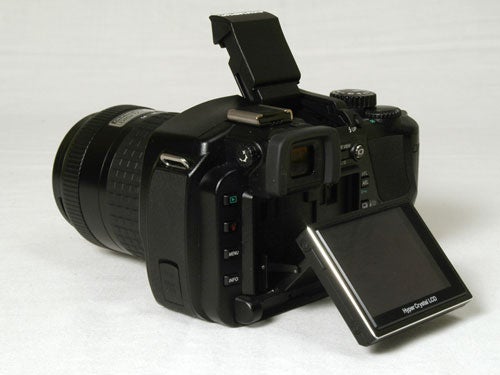
Novelty value aside, the E-330 is a very competent camera in its own right. It is exceptionally well made, and very comfortable to handle. Like the E-300 it has an impressive list of features and options. As well as program, aperture and shutter priority and full manual exposure, it has portrait, landscape, macro, action and night scene mode, and a selection of 20 scene modes, some of which confusingly duplicate the program modes.
Delving into the menu options, there are no less than five separate metering modes, including highlight and shadow spot metering, very handy for studio or portrait work where very precise exposure is vital. There are three pre-set colour modes, which can be individually customised with adjustments for contrast, sharpness and saturation, and each white balance setting can also be customised with different colour settings.
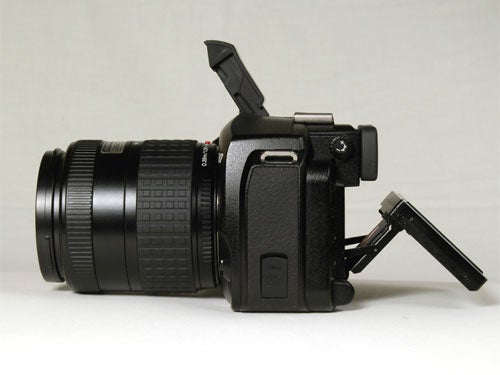
The menu system itself is exceptionally detailed and will be a little overwhelming for beginners, and a thorough read of the manual is strongly recommended, however this is another one of those annoying cameras that has its main manual on CD-ROM only. Come on Olympus, if you’re expecting us to shell out nearly £800 for a camera, at least have the courtesy to include a printed manual.
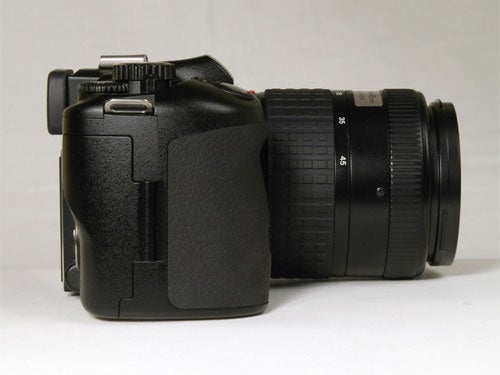
Performance-wise, the E-330 is a bit of a mixture. Its start-up time is about two seconds, rather slower than the effectively instant start up times of most DSLRs. It can shoot 10 shots in around six seconds in SQ quality mode and continuous shooting, somewhat slower than the 3fps claimed in Olympus’ press materials.
It produces some fairly hefty file sizes. RAW mode files are over 12MB each, and SHQ JPEGs are nearly 5MB. Shooting in the preferred SHQ+RAW mode a 1GB CompactFlash card will only hold 52 shots. The E-330 also has a slot for xD-Picture cards, so packing in a lot of storage isn’t a problem.
The Digital ESP metering system is superb, but I did have a few problems with the AF system refusing to lock on to nearby subjects, especially at close range, or failing to lock on to moving objects.
Fortunately the superb quality of the images makes up for a few minor problems. The E-330 uses a new “Live MOS” sensor which at 7.2MP is actually smaller than the sensor in the E-300, however the image quality is much improved. Having used both the Canon 30D and the E-330 in the past week, I have to say that although I preferred the handling and performance of the Canon, I prefer the pictures from the Olympus. Although they are slightly smaller in actual pixel size, they are around twice the size in terms of megabytes at the highest quality JPEG setting. I found the colour rendition to be both smoother and more subtle, with better overall saturation. With the relatively low compression there is plenty of fine detail in the default JPEG files, and even more if you shoot in RAW and convert in Photoshop.
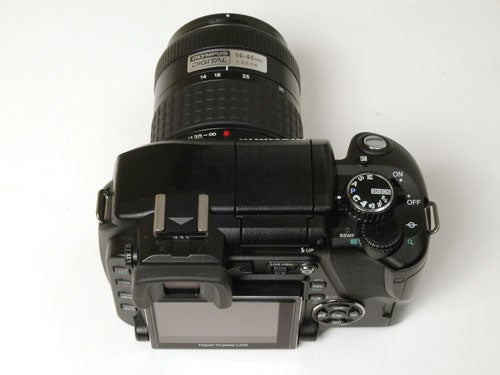
The supplied 14-45mm lens is also optically superb, although I hated the fly-by-wire manual focusing control. Olympus optics have a good reputation, and there is a decent range of E-Series lenses available.
”’Verdict”’
This is a camera that you could use professionally and be assured of good results. Although it may look a little strange, it performs as well as any of its direct mid-range competitors. It has a full range of professional options, including excellent colour options. The live monitor view is a very welcome bonus on an excellent camera.
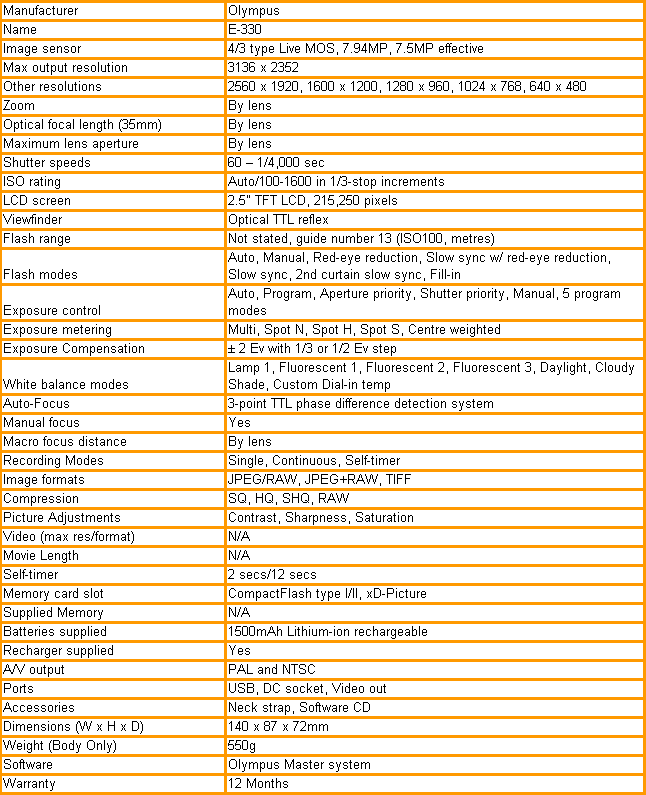
A range of test shots are shown over the next three pages. Here, the full size image has been reduced for bandwidth purposes, and a crop taken from the original full resolution image has been placed below it in order for you to gain an appreciation of the overall quality. The following pages consist of resized images so that you can evaluate the overall exposure. For those with a dial-up connection, please be patient while the pages download.
—-
Note: The Olympus E-330 has a range of ISO settings from 100 to 1600 in increments of 1/3rd of a stop. For the sake of simplicity and bandwidth we will only look at the whole-stop settings. These shots were taken indoors using domestic incandescent lighting (a reading lamp) and the incandescent white balance setting.
—-
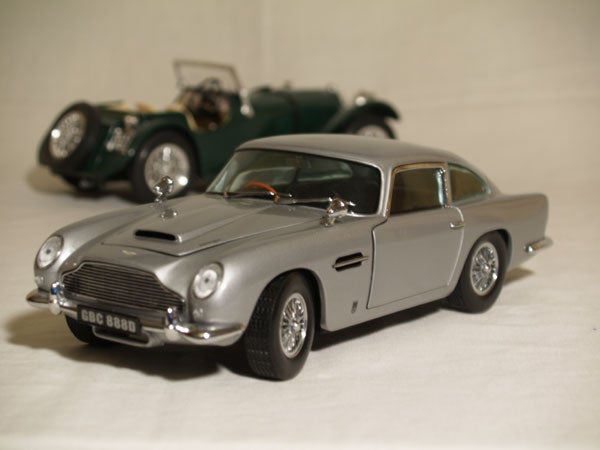
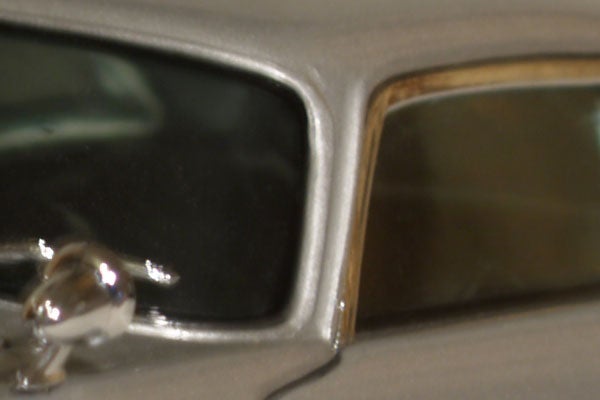
0.8 sec, F5.6, ISO 100
At the lowest ISO setting the E-330 produces an exceptionally smooth image and accurately captures subtle variations in tone.
—-
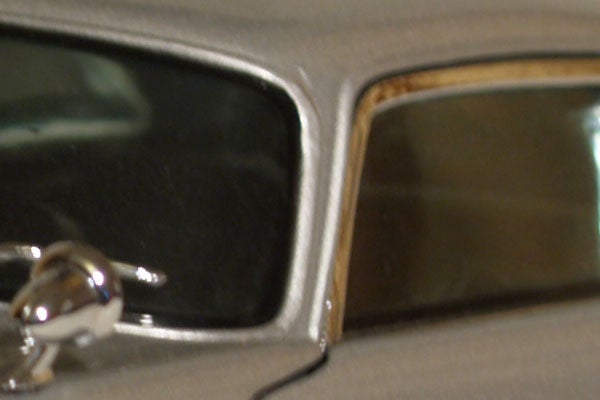
0.4 sec, F5.6, ISO 200
Taking the sensitivity up by 1EV the image is still very smooth, and the slightly faster shutter speed has reduced vibration. I need a new tripod.
—-
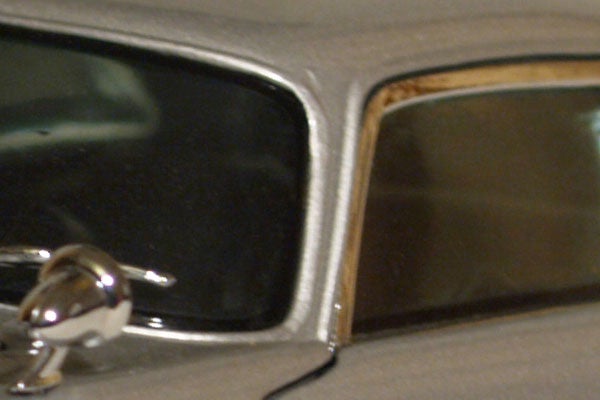
1/5th sec, F5.6, ISO 400
Moving up to 400 ISO there is a little noise in the darker areas of the shot, and a hint of colour degradation in the mid tone areas, but the picture is still very good overall.
—-
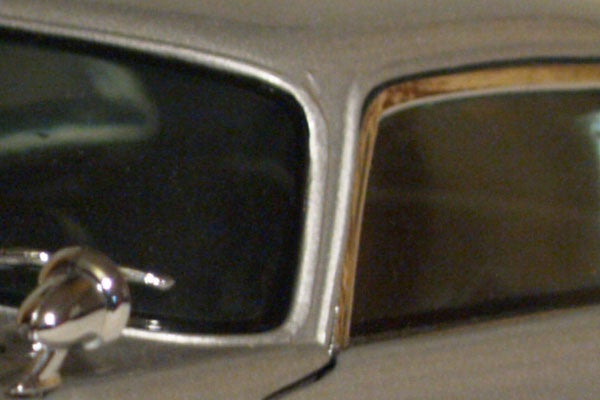
1/10th sec, F5.6, ISO 800
800 ISO is outside of the recommended range (100-400), and it’s easy to see why. There’s quite a lot of noise and patches of random colour have appeared.
—-
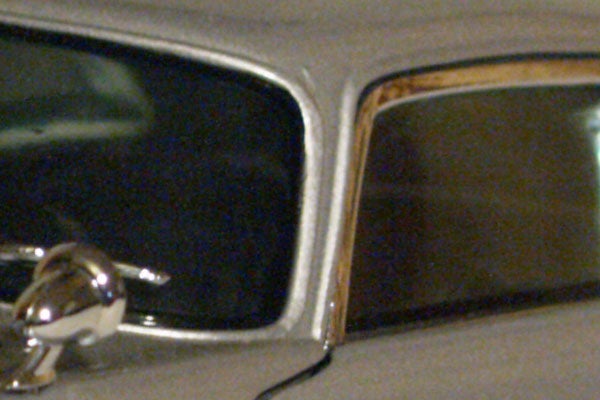
1/20th sec, F5.6, ISO 1600
At the maximum ISO setting there is a good deal of noise across the entire image, especially in the darker areas. Avoid this setting.
—-
This page consists of resized images so that you can evaluate the overall exposure.
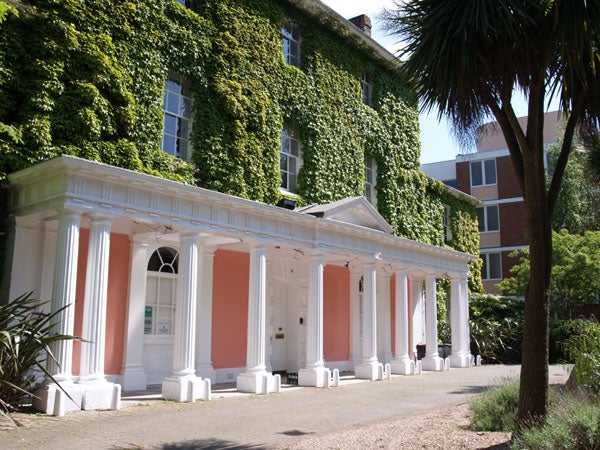
Compare this shot with one I took of the same building with the Canon EOS 30D last week. I think this one is better.
—-
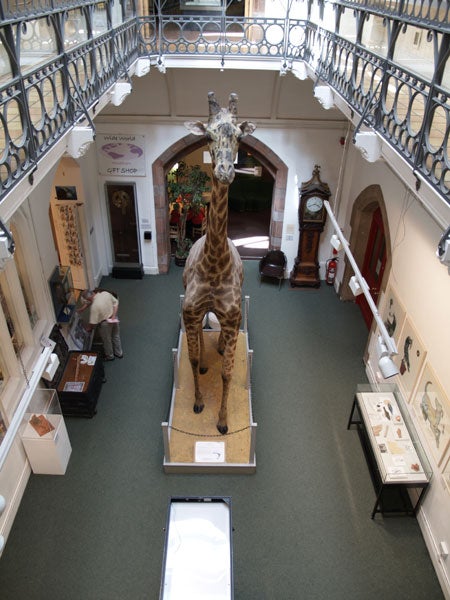
The wide end of the 14-45mm lens is roughly equivalent to 28mm, wide enough to cope with unusually large subjects.
—-
This page consists of resized images so that you can evaluate the overall exposure.
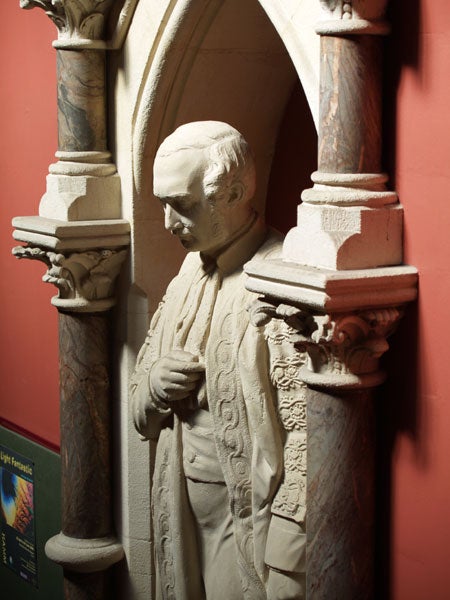
The short telephoto end of the zoom is equivalent to 90mm, an ideal focal length for portrait studies. That’s Prince Albert, in case you were wondering.
—-

That’s art, that is. Also, note the subtlety of the tonal variations and the excellent dynamic range. There are no burned highlights, and there’s detail in the shadows.
—-
This page consists of resized images so that you can evaluate the overall exposure.

The E-330’s colour rendition is very vibrant even in Natural mode, but stops short of the over-saturated results from the E-300.
—-
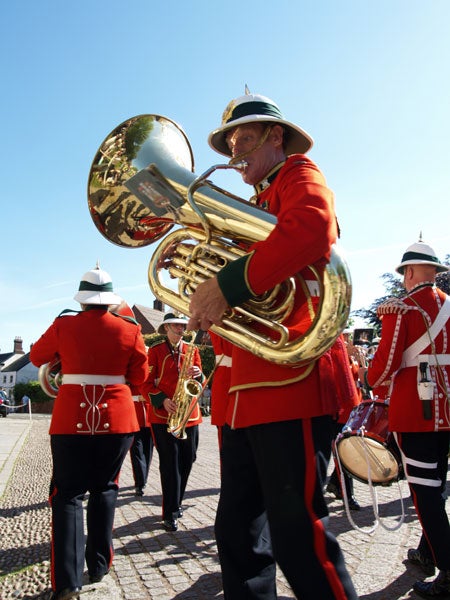
The AF system has let me down a bit here. It wasn’t quite fast enough to lock on to this guy as he about-turned, and there is a little blurring. The exposure is perfect though.
—-
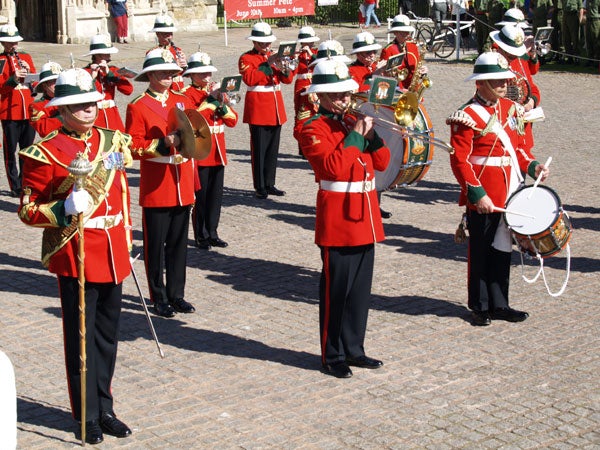
The last ever performance of the marching band of the Devonshire and Dorset Regiment, before the big merger. By tilting the monitor downward I was able to hold the camera above the crown in front of me.
—-
Trusted Score
Score in detail
-
Value 6
-
Image Quality 9
Features
| Camera type | Digital SLR |
| Megapixels (Megapixel) | 7.5 Megapixel |
| Optical Zoom (Times) | By lensx |

